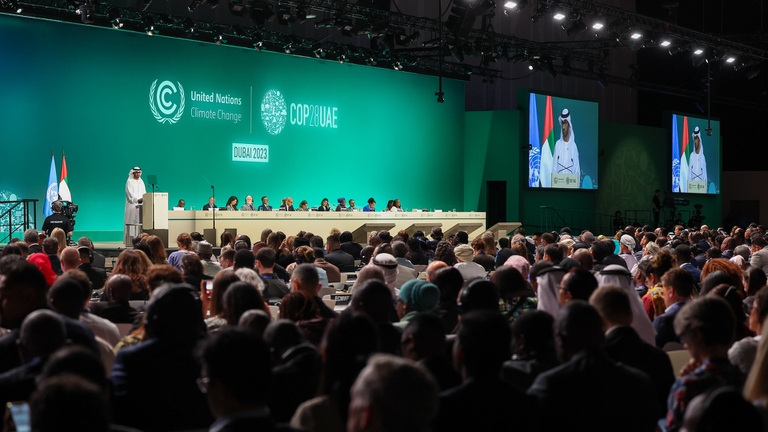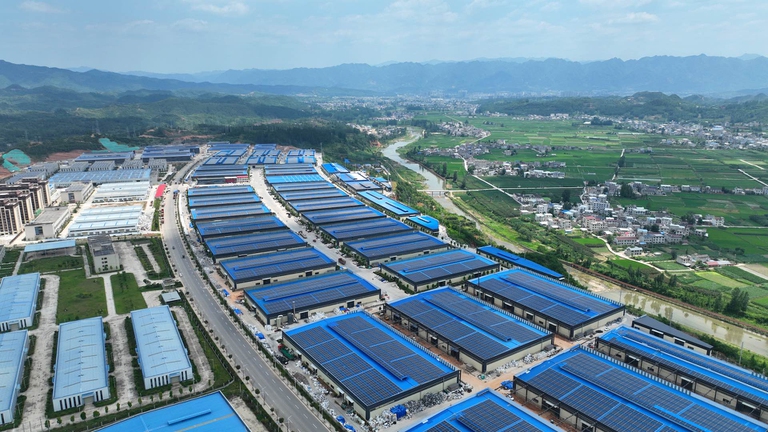https://www.lifegate.it/triplicare-rinnovabili-2030
- |
- At COP28 in Dubai, governments around the world established the principle of tripling renewables by 2030.
- At this rate, however, the objective will not be achieved.Only China will surpass it, perhaps even this year.
The European elections they marked an evolving political landscape, with the absence of an advance by the far right and a significant loss of consensus for the Greens, the main environmentalist group.While we await the formation of the new parliamentary majority, the climate crisis remains a crucial issue.The increase in renewable sources is seen as the primary solution to address this crisis.However, as indicated byInternational Energy Agency (Iea), at the current rate it is unlikely that the objectives set for 2030 are achieved.

Triple renewables:ambitious but achievable goal
At the climate summit Cop28 in Dubai, almost 200 countries have made significant promises in the field of energy, aimed at keeping alive the most ambitious objective of theParis Agreement, that is, limiting global warming to +1.5 degrees.For the first time, governments have set global targets for 2030, including triple renewable energy capacity, double energy efficiency, dramatically reduce methane emissions and accelerate a just and orderly transition away from fossil fuels.
Now the focus shifts to the implementation of these goals, as countries prepare to update their promises to reduce greenhouse gas emissions, the so-called NDCs or Nationally determined contributions.Next year, governments will have to present new climate action plans that renew the ambitions for 2030 and define new goals for 2035, offering an important opportunity to implement the promises made at COP 28.
Recent IEA analyzes indicate that global renewable energy capacity will triple by 2030 It is an ambitious but achievable goal, thanks to record annual distribution and growing investments in clean energy.Among other things, in 2024, economic investments in clean energy could reach almost double those destined for fossil fuels, according to the report World energy investment of the IEA.However, of the 194 NDCs analyzed, only 14 include explicit goals for total renewable energy capacity for 2030, totaling just 1,300 gigawatts (GW), just 12 percent of the global commitment.To achieve the goal of tripling renewable capacity, therefore, it will be necessary to install a further 8,000 GW by 2030.

Both advanced and emerging economies are planning to double renewable capacity.This is contained in the commitments of its climate action plans.However, imbalances in energy investment flows persist, with many regions still spending too little on renewable sources.
There China represents a significant exception, as in its emissions reduction promises it plans to reach the target of 1,200 GW of solar photovoltaic and wind capacity within this decade.In reality, China could achieve its goal already this year and this, in numerical terms, makes the difference:in fact, the Chinese race alone represents over 90 percent of the renewable capacity explicitly mentioned currently by the NDCs.
China aside, the rest of the world must accelerate
As we look to 2023, renewable capacity additions globally have reached nearly 560 GW.This is an unprecedented increase by 64 percent compared to 2022.This pace is on track to reach nearly 8,000 GW of installed capacity by 2030.However, China's contribution is crucial, while the rest of the world must accelerate annual growth of 36 percent between now and the end of the decade, to achieve the set objectives.
So, despite the progress, current global ambitions are therefore not aligned to the COP28 commitment.But the potential is there:the improvement in the cost competitiveness of renewables compared to fossil fuels demonstrates the importance of policies in encouraging the spread of clean energy.Since 2015, global renewable capacity has tripled thanks to political support.In short, well-designed policies can further accelerate this diffusion, fill existing gaps and encourage countries to raise their ambitions for a sustainable future.
